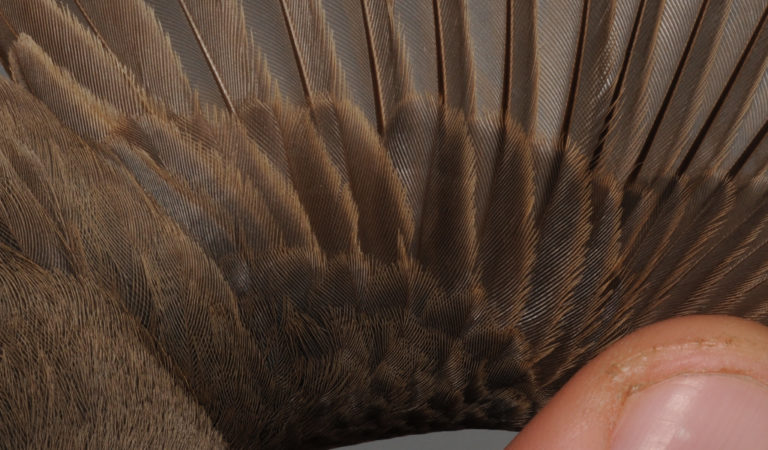

Common Redstart

2cy (female) May. Females are generally more difficult to assess since the post-juvenile GC are more similar to the juveniles ones. In this bird, GC1-7 are juvenile (more worn and warm buff edges and a browner and less glosy centre) in contrast to post-juvenile GC8-10 (more fresh and olive-brown edges [esp. the proximal part of the edge] and a slightly more greyish-brown centre with better gloss). [CN93769]
Ringers’ DigiGuide is sponsored by:
Hemsidan producerad i samarbete med
BirdLife Sverige